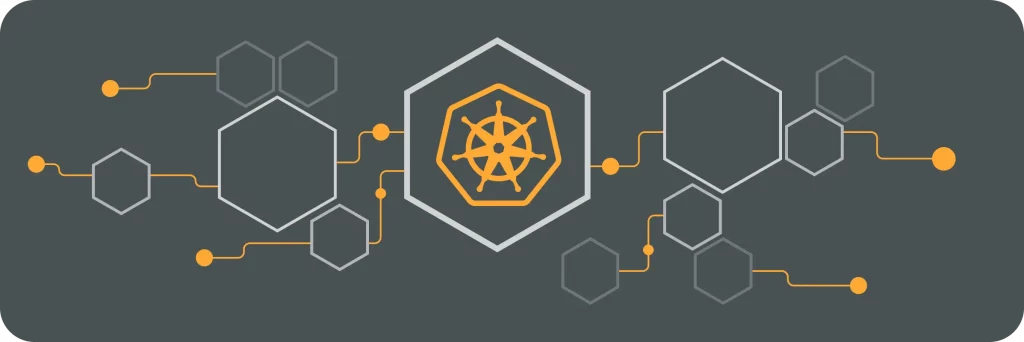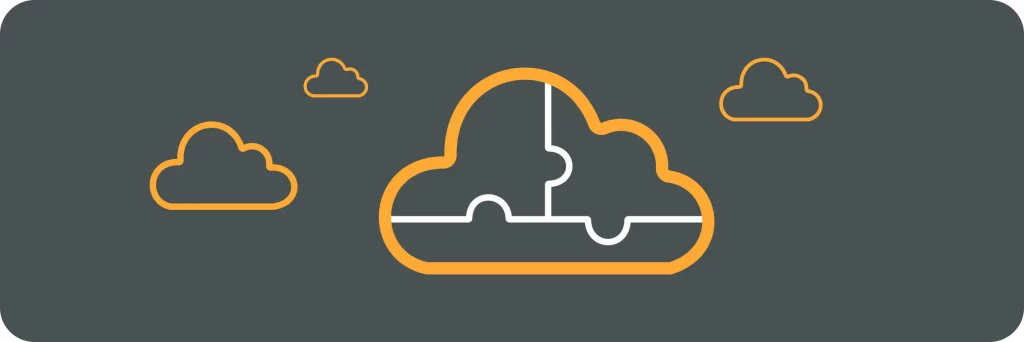In today’s fast-paced world of technology, Kubernetes has emerged as a leading platform for container orchestration. As organizations move towards microservices and containerization, monitoring these complex environments becomes crucial. This is where New Relic comes into play – an industry-leading monitoring solution that offers a comprehensive Kubernetes monitoring experience.
Understanding Kubernetes and New Relic
Kubernetes, often referred to as K8s, is an open-source container orchestration platform that automates container deployment, scaling, and management. It provides a robust, scalable, and flexible infrastructure for running and managing applications in a distributed environment.
One of the key features of Kubernetes is its ability to automatically scale applications based on resource usage, ensuring optimal performance and resource utilization. This dynamic scaling capability allows organizations to handle fluctuations in traffic and demand without manual intervention, leading to improved efficiency and cost-effectiveness.
Moreover, Kubernetes offers advanced networking features such as service discovery, load balancing, and network policies, enabling seamless communication between microservices and ensuring secure and reliable connectivity within the cluster.
New Relic, on the other hand, is a performance monitoring and management tool that enables organizations to gain real-time visibility into their applications and infrastructure. It helps identify performance bottlenecks, track system health, and enhance overall application performance.
What is Kubernetes?
Kubernetes essentially acts as a control plane that manages the scheduling, scaling, and monitoring of containers. It eliminates the need for manual intervention and ensures that applications are running efficiently, even in complex distributed environments.
With Kubernetes, organizations can achieve high availability and fault tolerance by automatically restarting failed containers and distributing workloads across multiple nodes. This resilience ensures that applications remain operational and responsive, even in the face of hardware failures or network issues.
What is New Relic?
New Relic provides a suite of monitoring tools that allow organizations to monitor their applications and infrastructure. It collects and analyzes data from various sources, providing insights into system performance, resource utilization, and application behavior.
By leveraging New Relic’s monitoring capabilities, organizations can proactively identify and address performance issues before they impact end users. Real-time alerts and customizable dashboards empower teams to monitor key metrics, troubleshoot issues, and optimize application performance for a seamless user experience.
The Importance of Monitoring in Kubernetes
Monitoring plays a vital role in managing Kubernetes environments. It helps ensure system health and identifies issues before they affect the overall performance of applications.
Implementing a robust monitoring strategy in Kubernetes is crucial for maintaining the stability and reliability of the system. By continuously monitoring various aspects such as pod status, cluster resources, and application performance, administrators can proactively address any potential issues that may impact the overall system health.
Ensuring System Health
With the dynamic nature of Kubernetes, it is essential to monitor and track the health of the system. By monitoring resource utilization, network traffic, and performance metrics, administrators can identify potential bottlenecks and resolve them proactively.
Utilizing monitoring tools like Prometheus in conjunction with Grafana dashboards can provide detailed insights into the performance of Kubernetes clusters. These tools enable administrators to visualize key metrics, set up alerts for critical events, and analyze historical data to optimize resource allocation and enhance system efficiency.
Using New Relic, organizations can gain real-time insights into the health and performance of their Kubernetes clusters. They can monitor CPU usage, memory usage, disk I/O, and network traffic to ensure optimal system performance.
Detecting and Solving Issues
In a complex and dynamic Kubernetes environment, issues can arise at any time. Monitoring tools like New Relic enable organizations to detect and address application-level issues, such as slow response times, errors, and latency spikes.
New Relic’s monitoring capabilities provide in-depth insights into application behavior, enabling teams to troubleshoot issues quickly and efficiently. By identifying the root cause of problems, organizations can minimize downtime and improve the overall user experience.
Setting Up New Relic for Kubernetes
Setting up New Relic for Kubernetes is a straightforward process that requires a few steps. New Relic offers a robust monitoring solution that can provide valuable insights into the performance and health of your Kubernetes cluster.
Before diving into the installation process, it’s essential to understand the benefits of using New Relic for Kubernetes. With New Relic, you can gain visibility into the resource utilization, application performance, and overall health of your Kubernetes environment. This level of monitoring can help you identify bottlenecks, optimize resource allocation, and improve the overall reliability of your applications.
Installation Process
Installing New Relic on your Kubernetes cluster involves deploying the New Relic Kubernetes integration. The integration automatically collects and sends metrics, logs, and events to the New Relic platform for analysis. This seamless integration allows you to start monitoring your Kubernetes environment with minimal effort.
By following the step-by-step installation guide provided by New Relic, organizations can quickly start monitoring their Kubernetes environment. The guide walks you through the process of deploying the New Relic infrastructure agent and configuring the necessary settings to start collecting data.
Configuration Guidelines
Once New Relic is installed, it is essential to configure it according to your specific needs. This includes selecting the metrics and logs you want to collect, setting up alerts, and customizing dashboards. Customizing your monitoring setup ensures that you are focusing on the metrics that matter most to your organization.
New Relic provides comprehensive documentation and guidelines for configuring the monitoring solution to ensure you get the most out of it. By following best practices and leveraging New Relic’s expertise, you can tailor the monitoring solution to meet your unique requirements and gain valuable insights into your Kubernetes environment.
Key Features of New Relic Kubernetes Monitoring
New Relic offers a range of features specifically designed for monitoring Kubernetes environments.
When it comes to Kubernetes monitoring, New Relic stands out for its comprehensive approach. Beyond just basic monitoring capabilities, New Relic provides advanced features that enable organizations to gain deep insights into their Kubernetes clusters.
Infrastructure Monitoring
With New Relic, organizations can monitor the health and performance of their Kubernetes infrastructure components. This includes monitoring nodes, pods, containers, and deployments, gaining insight into resource utilization and ensuring optimal system performance.
Furthermore, New Relic’s infrastructure monitoring goes beyond just surface-level metrics. It offers detailed visibility into the networking layer, allowing organizations to track network traffic patterns and identify potential bottlenecks that could impact overall performance.
Application Performance Monitoring
Monitoring the performance of applications running in a Kubernetes environment is crucial for ensuring a seamless user experience. New Relic allows organizations to monitor application response times, errors, and throughput. It provides detailed transaction traces and helps identify performance bottlenecks.
In addition to application performance monitoring, New Relic also offers robust logging capabilities for Kubernetes environments. Organizations can centralize their logs, perform advanced log searches, and set up alerts based on log data, enabling proactive troubleshooting and issue resolution.
Best Practices for New Relic Kubernetes Monitoring
Implementing New Relic for Kubernetes monitoring comes with its own set of best practices to ensure maximum efficiency.
When setting up New Relic for Kubernetes monitoring, it is crucial to consider the specific needs and requirements of your organization. By tailoring the monitoring setup to align with your business objectives, you can effectively track the metrics that matter most to your operations.
Setting Up Alerts
Alerts allow organizations to be notified of critical events or deviations from normal behavior. It is recommended to configure alerts based on key metrics such as CPU usage, memory utilization, and error rates. This enables proactive issue detection and resolution.
Additionally, setting up alert escalations can help ensure that the right personnel are notified at the appropriate times, reducing response times and minimizing potential downtime.
By defining robust alerting policies in New Relic, organizations can ensure that anomalies are detected promptly, minimizing the impact on users.
Utilizing Dashboard Features
New Relic provides powerful dashboarding capabilities that allow organizations to visualize and analyze data from their Kubernetes environments. By creating custom dashboards, teams can gain insights into the overall health, performance, and resource utilization of their Kubernetes clusters.
Furthermore, leveraging New Relic’s dashboard sharing functionality can promote collaboration and transparency within teams. Sharing relevant dashboards with stakeholders across different departments can foster a data-driven culture and facilitate informed decision-making processes.
With New Relic’s customizable dashboard features, organizations can monitor metrics that are critical to their specific use cases, enabling efficient troubleshooting and decision-making.
Conclusion
As Kubernetes continues to gain popularity, monitoring its environments becomes a crucial aspect of ensuring optimal application performance. With New Relic’s comprehensive monitoring solution specifically tailored for Kubernetes, organizations can gain real-time visibility into their applications and infrastructure, proactively detect and resolve issues, and maintain a high level of system health. By following best practices and utilizing the key features provided by New Relic, organizations can streamline their Kubernetes monitoring and deliver exceptional user experiences.




